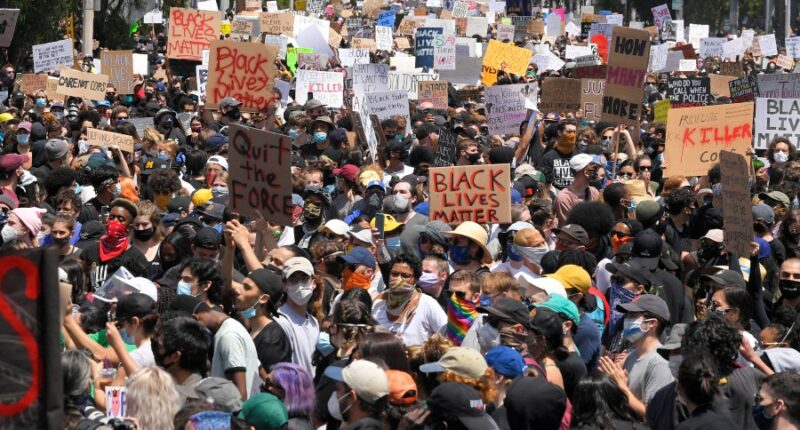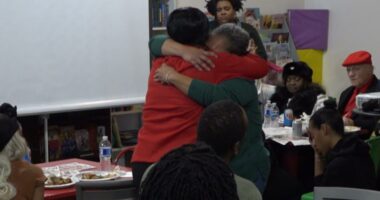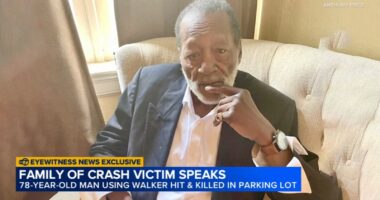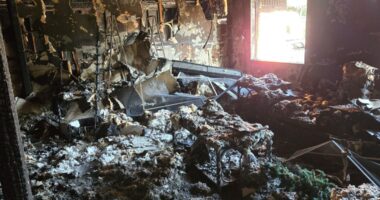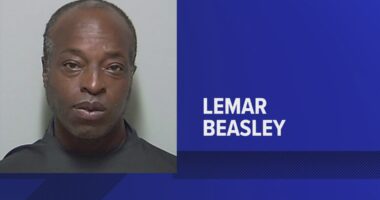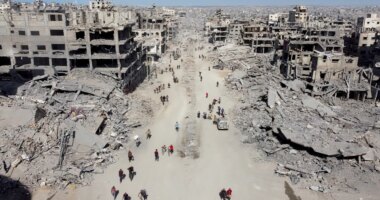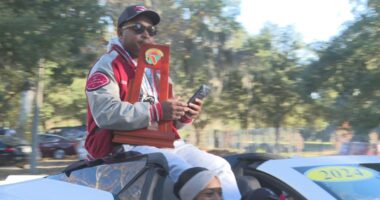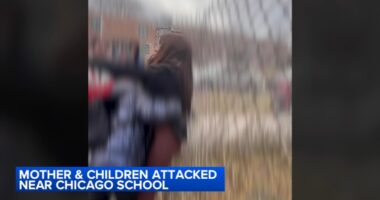Share this @internewscast.com

A protester who was shot in the face by a Los Angeles sheriff’s deputy during a 2020 demonstration against police brutality has been awarded at least $2.2 million by a jury.
Last week, the jury found LA County responsible for the injuries incurred by Cellin Gluck, awarding him $3.5 million in damages. Additionally, they granted $300,000 to his daughter for her emotional distress that day.
LA County attorneys noted that because the jury concluded Gluck and other nearby protesters were partly responsible, the court will reduce the damages by 35%, meaning Gluck receives approximately $2.27 million, and his daughter receives $195,000.
“The County is exploring all of its options in this case, including the possibility of an appeal,” the statement said.
Gluck, known for directing films like “Oba: The Last Samurai” and “Persona Non Grata,” claimed in his lawsuit that he and his daughter were subjected to excessive force at a peaceful protest in May 2020, following George Floyd’s death at the hands of police in Minneapolis.
As they were heading back to their car after the protest, they met a protester in distress who said he’d been struck in the face with a beanbag, according to the lawsuit. Gluck was then hit in the face with a nonlethal projectile, while holding only a camera, the complaint added.
“The impact’s force snapped his head back, causing him to fall to the ground,” as stated in the plaintiffs’ trial brief. “He was unarmed and not involved in any violent or threatening actions.”
The complaint said the projectile “traveled up his nasal cavity, where it remained lodged for almost an entire year, until it was surgically removed,” causing Gluck permanent disfiguring injuries, traumatic brain injury, and other lasting consequences.
Carl Douglas, his attorney, said he was Gluck has been able to “receive some measure of justice,” but the verdict is about half of what he originally asked for.
“He is a 67-year-old man whose doctors have said he will have to manage the consequences of his injury for the rest of his life,” Douglas said. “This amount of money will not adequately compensate him for the injuries he continues to endure everyday.”
Douglas said the training for law enforcement officers teaches them that they should not target someone above the shoulder unless they presented a deadly threat.
He said the fact that officials were unable to identify the specific deputy who shot Gluck was a “tremendous indictment on the county and the system.”
“Until they are held accountable for their actions, there will continue to be verdicts by the people of Los Angeles trying to send a message to their law enforcement agencies to do better,” Douglas said.
The LA County Sheriff’s Department said in a statement that a different administration is in place now, but the department’s leaders “recognize the importance of thoroughly reviewing and evaluating what occurred at that time to identify lessons that can help us improve our service to the community.”
The use of less-lethal munitions by law enforcement to control crowds has come under scrutiny again recently after protests in downtown LA against the Trump administration’s aggressive crackdown on illegal immigration and the presence of federal agents in the city.
Journalists and other members of the media have been shot, leading to a federal judge granting a temporary restraining order that blocked LA police from using rubber projectiles and other less-lethal munitions against journalists.
One protester filed a civil rights claim against the city of LA and county sheriff’s department after losing his finger from a less-lethal munition fired at him during a demonstration that was part of nationwide “No Kings” protests.
In California, a claim must be filed before a civil rights lawsuit can be lodged against a city or county over police misconduct.
